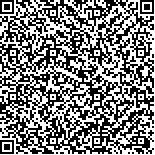下载中心
优秀审稿专家
优秀论文
相关链接
摘要

利用GNSS-MR(Global Navigation Satellite System Multipath Reflectometry)技术反演积雪深度是近年来一种新兴的卫星遥感技术。目前大多数研究仅使用GPS(Global Position System)数据限制了该技术的发展,为了扩展GNSS-MR算法的应用,介绍了基于GNSS-MR算法的雪深反演模型。首先,通过多项式拟合分解GLONASS观测数据获取高精度的信噪比残差序列;然后,利用Lomb-Scargle谱分析法对其进行频谱分析可解算雪深值。选取IGS中心的YEL2站2015年11月到2016年6月共243天的GLONASS卫星L1波段反射信号的SNR数据进行实例分析,并以美国国家气象数据中心提供的加拿大Y-H (Yellowknife Henderson)气象站的实测雪深数据为真值,将反演雪深与实测雪深进行对比验证。所得实验结果如下:(1) 与GPS卫星的反演值相比,基于GLONASS-MR (GLONASS Multipath Reflectometry)技术反演积雪深度的精度同样能达到厘米级,RMSE仅3.3 cm,反演值与实测值的空间分布趋势一致且相关性较强,其相关系数R2高达0.969;(2) 不同的积雪深度对信噪比的振幅频率与垂直反射距离具有直接影响;(3) 对同一卫星而言,信噪比的频谱振幅强度峰值与其对应的反演值存在线性相关;(4) 在相同条件下,采用多颗GLONASS卫星数据比单颗GLONASS卫星数据反演雪深的效果明显更优。基于反演的高时间分辨率产品,分析该地区雪深日变化的情况,实验结果表明基于陆基CORS站的GLONASS-MR技术在用于实时、连续的雪深变化监测方面具有良好的潜力和可行性。
Snow Depth (SD) measurements are important to hydrology, climatology, and agriculture. Global navigation satellite system multipath reflectometry (GNSS-MR) technology is a relatively new and powerful method for sensing SD. Thus far, many algorithms have been proposed to detect SD from the Signal-to-Noise Ratio (SNR) data of different satellites' reflectometry signals. However, the relevant studies based on GLONASS satellites have less consideration for the development of existing GNSS-MR algorithms. This study aims to verify and analyze the suitability and reliability of applying GNSS-MR model for SD detection from GLONASS data.
Theoretical analysis and formula derivation are conducted to systematically and quantitatively determine the SD detection. By analyzing the characteristics of the ground-based GNSS SNR data caused by multipath, this study introduces the detection model and the basic theory of GNSS-R technology based on SNR data to detect SD data. The SNR data of GLONASS L1 reflectometry signals can be obtained from the CORS (Continuously Oporating Reference Stations) network provided by the International GNSS Service (IGS). The residual sequence of this SNR serves as key knowledge for the SD detection in GNSS-R model. The SD is estimated through the spectral analysis using a Lomb-Scargle algorithm.
To verify the above theory, the GLONASS-MR model is used to detect SD over the Yellowknife Henderson area in Canada. The observed period is from November 2015 to June 2016, 243 days in total. Then, the GLONASS products are compared with in situ measurements of the National Climate Data Center. Tesults show the following:(1) The accuracy of the detected SD based on GLONASS-MR can reach centimeter level, and the RMSE is 3.3 cm. The detected results likewise reveal good spatial coincidence, with a correlation coefficient of 0.969. (2) The different snow depths can directly affect the amplitude frequency of GLONASS SNR data and the vertical reflection distance. (3) For the same satellite, a linear relation is discovered between the peak values of the amplitude frequency and the detected SD. (4) Under the same conditions, SD detected using more GLONASS satellites can have less bias than that from a GLONASS satellite.
This study aims to add new SNR data to the GNSS-MR algorithm to improve SD detection when other satellites' data cannot be obtained. Validation using both simulated SD data and in situ measurements indicates that the proposed method is effective and can be used for real-time and continuous SD monitoring. Therefore, this study provides references for the future development of GNSS-R technology in China.

